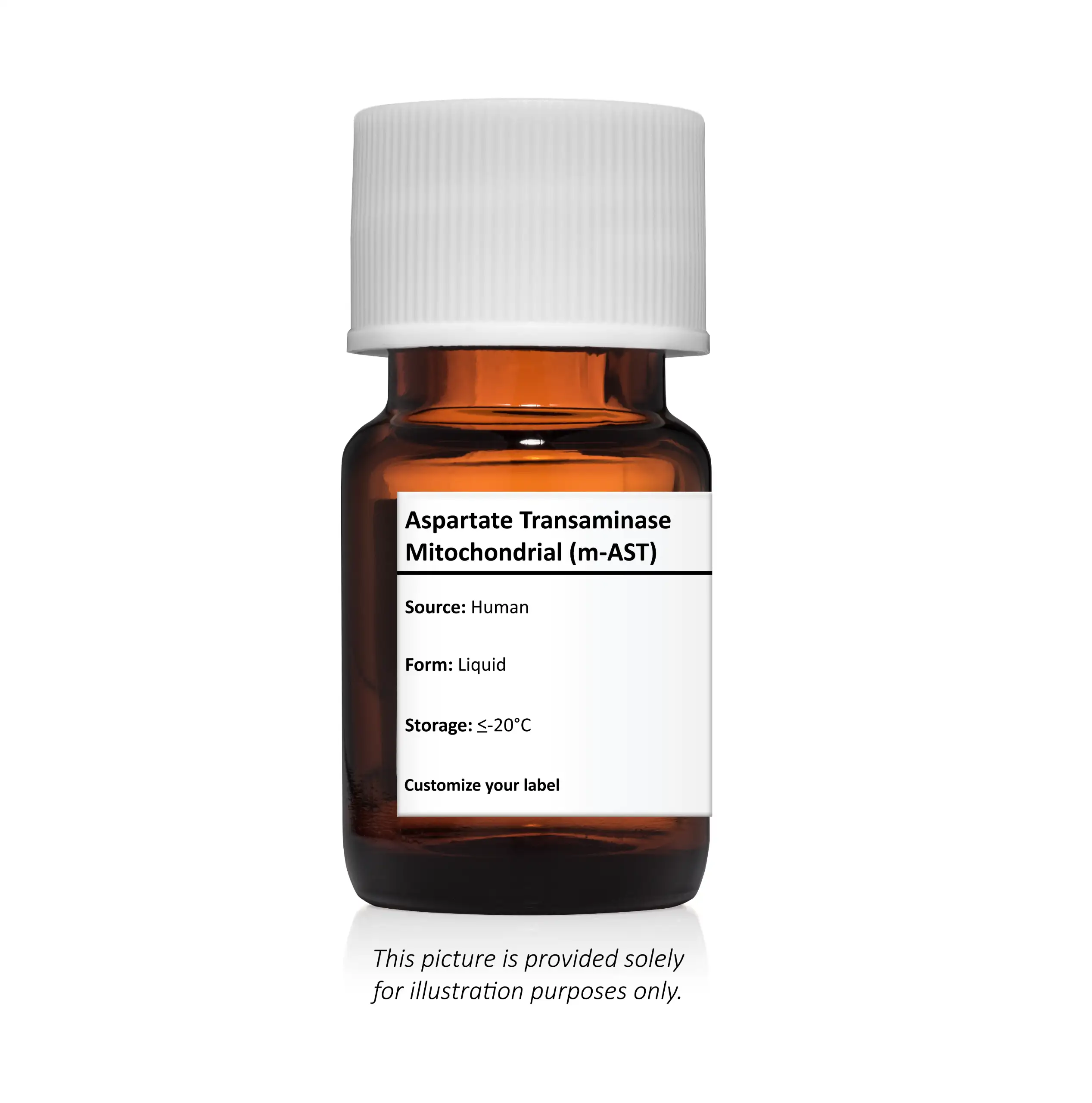Aspartate Transaminase Mitochondrial (m-AST)
Aspartate Aminotransferase (AST/GOT/SGOT) exists in human tissue as two genetically and immunologically distinct isoenzymes, one associated with the cytoplasm (c-AST) and the other with the mitochondria (m-AST).
| Product Specifications | |
|---|---|
| Source | Human |
| Form | Liquid |
| Purity | Partially Purified |
| Storage | < -20°C |

Both dimers are composed of two identical polypeptide subunits of about 400 amino acids residues, containing a highly conserved Lys-259 residue that covalently binds the prosthetic group Pyridoxal-5′-Phosphate. The molecular masses of the holo-enzymes are 93,000 Da for c-AST and 90,400 Da for m-AST, making it difficult to differentiate on polyacrylamide gels. The AST activity measured in serum is the sum of c-AST and m-AST. The main sources of AST are found in striated muscle, myocardium, and liver tissue. Elevated levels of m-AST in these tissues have been found to be correlated with myocardial infractions and early phase muscular dystrophy. In addition, an increased ratio between m-AST and total AST would be highly suggestive of chronic alcoholism, independent of the presence of liver disease.
